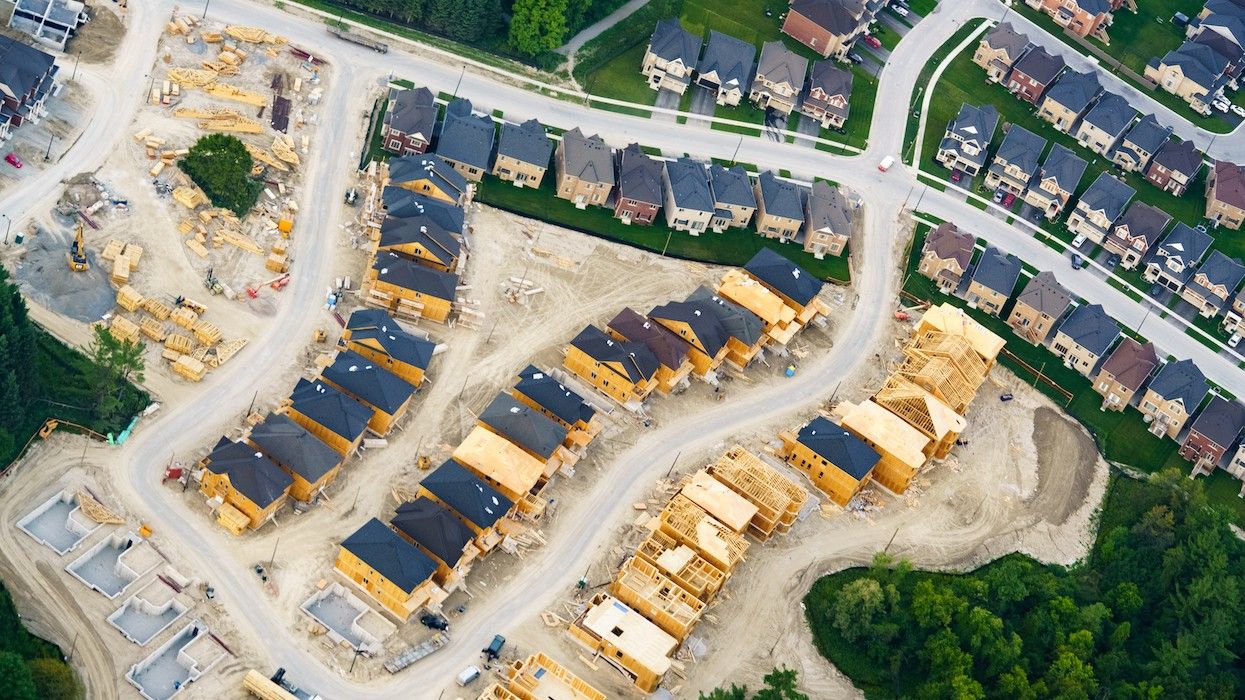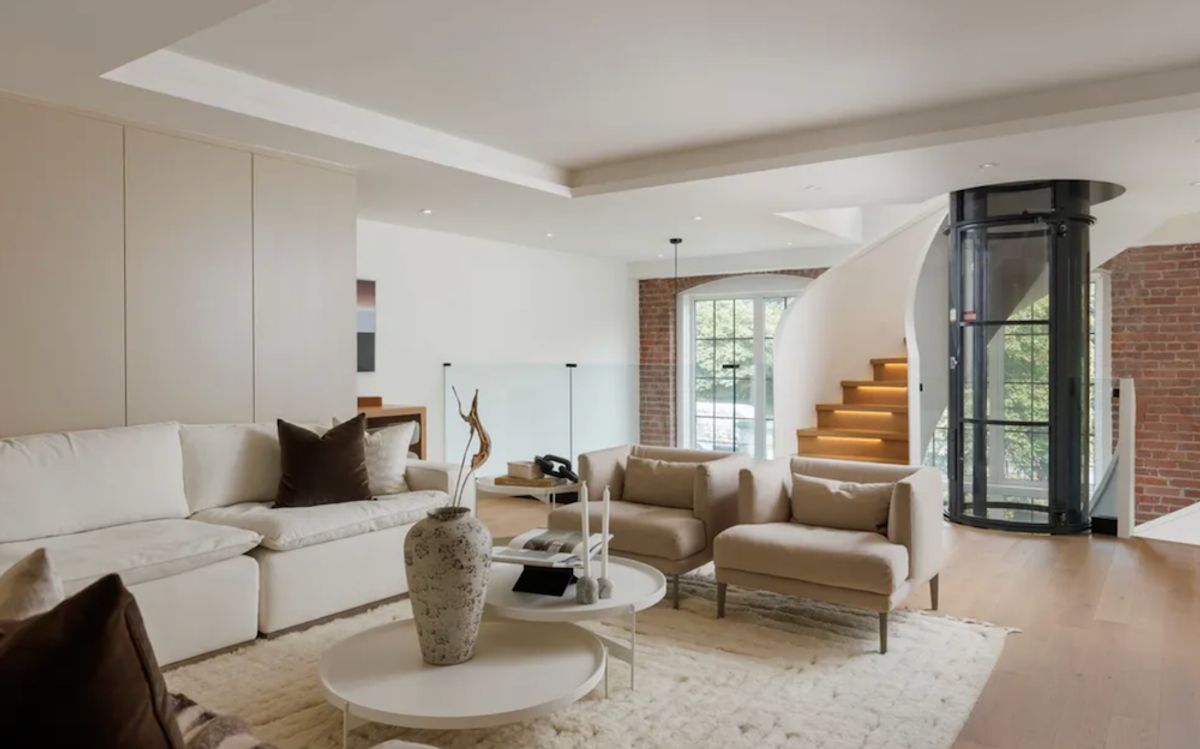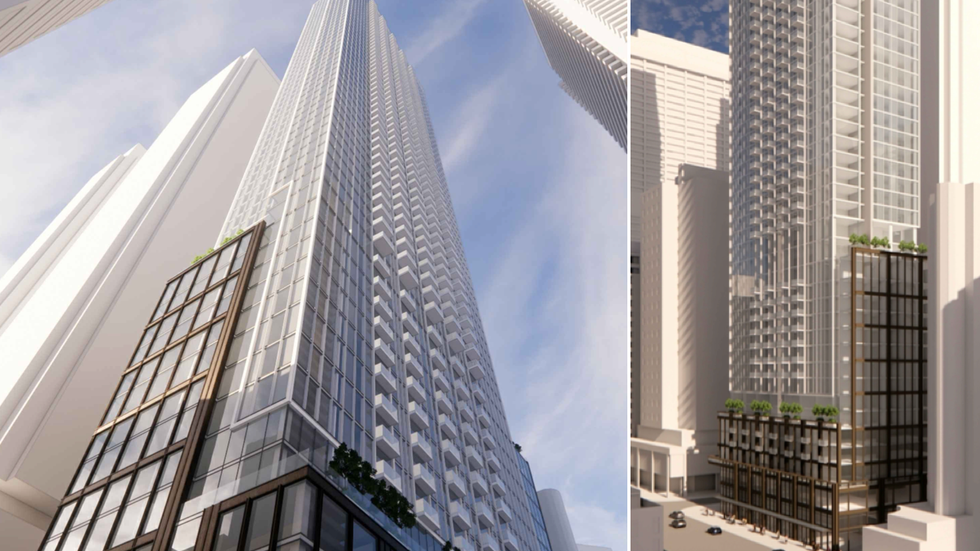This article was written and submitted by Marlon Bray, Executive Vice President at Clark Construction Management.
One of the true insanities of new home construction in the Greater Toronto Area is that building the actual home (or apartment) is less than half the total end cost.
If your ears are working, that should sound bonkers to you – the physical cost of building the actual home is less than 50% of its end cost?
Wait, what?
So where is the rest of the money going? Well, the cost of land, as well as taxes and fees are a massive component. And, as the cost of land is, in large part, driven by government regulation, the uptick in the cost of housing beyond the physical cost to create it – again, some 50% – is often government-led.
As an example, here’s the cost split on a low-rise new build in the GTA:
- Construction: 25-35%
- Finance: 10-15%
- Other: 10%
- Serviced Land: 20-30%
- HST: 10%
- Taxes and Fees: 13-15%
The mortgage on the ‘taxes and fees’ section alone will cost you around $2,000 per month for the next 25 years (the average new build single-family home in Ontario is approximately $1.6M right now). For those of you wondering, the math on new build apartments pencils out roughly the same.
The above numbers don’t even include the municipal land transfer tax, so add another $30,000-50,000 on top of that. Just peachy.

The approach to housing in Canada lands somewhere between farcical and insane.
Think: close to 30% in direct taxes coupled with regulations upon regulations and then sprinkled with a side of useless guidelines that combine to continually push costs up.
Everyone in the county seems to agree that we have a housing crisis (those wearing tinfoil hats excluded) with the consensus being that we need more housing. So why do we have a system that is set up to ensure we will absolutely fail? Why would the government choose a path that defies any logic?
The answer is simple: politics.
The housing crisis was caused because of politics, it will get worse because of politics, and it will continue not to work because of – you guessed it – politicians. I am not talking about party lines, leaning left or right, or even provincial vs municipalities: they are all just as bad as the next. The objective from political leaders of all kinds, it seems, is to look like you’re doing something, make sure a majority seem to think we’re heading in the right direction, and get reelected.
It’s simple math:
- 66% of people in Canada own a home (approx. 26 million people)
- 11% of Canadians own a secondary home (approx. 4.5 million people)
- 34% Canadians own mortgage free homes (approx. 13.5 million people)
So, politicians need to represent the will of the people in order to ensure their own success.
On average in this country, 63% of people vote in federal elections, 44% in provincial elections, and just 38% in mayoral elections. To win an election, politicians are focused on a very small percentage of the eligible voting people; at the federal level you need 22%, provincially 18%, and municipally around 14% of eligible voters. It’s an incredibly narrow window of focus, and if a lot of the electorate own homes, have made massive amounts of money from said homes, and also tend to vote most frequently; who else would politicians listen to? It’s certainly not first-time homebuyers.
If you look at voter distribution by age in the simplest way, the largest cohort is 45+ with somewhere in the 73%-79% range of voter turnout. First-time voters turn out just over half the time. Of these two cohorts, who’s more likely to own a mortgage-free home, and/or a second home? Older types generally. Why would they want the housing crisis fixed? It does not benefit them other than having to pay for the kids benefiting from the 'bank of mom and dad' so…. higher house prices mean a higher wealth further exacerbating the system.
The other aspect of voter turnout is that, traditionally, turnout is much less likely among lower-income individuals. This could explain the lack of focus we’ve seen on affordable housing in more recent history. The stats for Canada were difficult to find, but the US exhibits massive differences in voter turnout based on income level. Hence, the cynic in me sees the obsessive focus on helping the middle-class access housing as a vote buying exercise versus fixing a crisis.
Current affordable housing objectives are typically focused on a handful of projects with a relatively low volumes of units, all of which receive fanfare that’s much louder than those attempts made to actually deal with wait lists for both social and affordable housing. This, in turn, promotes a cycle of rewarding behaviour that doesn’t really solve issues (enough political goodwill is purchased in a small win, so there’s no need for significant change).
Social housing wait list in the City of Toronto:
- 2021: 78,879
- 2022: 84,282
- 2023: 85,097
- 2024: 86,959
Perhaps this is also viewed through the lens of the significant and ongoing challenge to provide good quality indigenous housing. Here, the perception of doing something is more important than fixing an issue.
Housing conditions facing Indigenous peoples:
- 17.1% (309,345) live in overcrowded housing
- Double the national average for non-indigenous people
- 16.4% live in a dwelling that is in need of major repairs
- Three times the level of the non-indigenous population
In sum: Our current housing system taxes new homes to the point that no one can build them or afford them, over-regulates land, design, and planning to such a claustrophobic manner that we lack approved land (insane in a country this large), all while addressing social housing, affordable housing, and Indigenous housing seems to have been abandoned… other than in press releases, which, last I looked, nobody can live in.





















